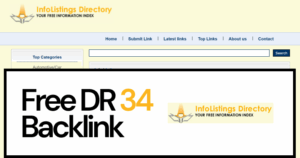Are you ready to take your website to the next level and boost your online visibility? In today’s digital landscape, search engine optimization (SEO) is crucial for driving organic traffic and reaching your target audience. To achieve success in the competitive world of online content, understanding the basics of SEO optimization is essential. From mastering keyword research to implementing best practices for meta tags, you’ll learn how to create high-quality, SEO-friendly content that resonates with both search engines and your audience. But it doesn’t stop there – we’ll also explore the power of SEO tools and plugins, mobile optimization strategies, the role of backlinks, and how to measure and analyze your SEO success. Whether you’re running an e-commerce site, targeting local customers, or simply want to stay ahead of the latest algorithm changes, this guide will equip you with the knowledge and tools you need to optimize your web content for maximum SEO impact. So, buckle up and get ready to transform your website into a search engine powerhouse!
Understanding the Basics of SEO Optimization
Keyword research plays a crucial role in SEO optimization. By understanding the specific keywords and phrases your target audience is using, you can tailor your web content to match their search queries. This ensures that your website appears higher in search engine results pages (SERPs) when users look for relevant information.
It’s important to differentiate between on-page and off-page seo when optimizing web content. On-page SEO focuses on factors such as keyword usage, meta tags, and internal linking within the website itself, while off-page SEO involves external factors like backlinks from other websites and social media mentions. Both aspects are essential for a comprehensive SEO strategy.
Best practices for meta tags include creating unique title tags and meta descriptions for each page of your website. These elements appear in SERPs and can greatly impact click-through rates. Incorporating relevant keywords into these tags helps signal to search engines what each page is about, ultimately improving visibility in organic search results.
Creating High-Quality Content for SEO Optimization
When it comes to optimizing web content for better SEO, one of the key factors is creating high-quality and relevant content. This involves using keywords that are not only relevant to your topic but are also engaging for the reader. By incorporating these keywords naturally into your content, you can improve its visibility on search engines.
In addition to using relevant keywords, it’s important to optimize the length and structure of your content. Search engines tend to favor longer, in-depth articles over shorter ones, so aim for a word count that allows you to delve deeply into your topic while still holding the reader’s attention. Additionally, structuring your content with headers, bullet points, and subheadings can help make it more scannable and user-friendly.
Finally, don’t underestimate the power of multimedia elements in optimizing web content. Incorporating images, videos, infographics, or interactive media not only enhances the visual appeal of your page but also makes it more engaging for users. Furthermore, including alt text and descriptive captions for multimedia elements can further boost their SEO performance.
Utilizing SEO Tools and Plugins for Optimization
One of the most crucial aspects of optimizing web content for better SEO is utilizing various tools and plugins. Google Analytics, for instance, allows website owners to perform keyword analysis by providing insights into which keywords are driving traffic to their site. By understanding the specific keywords that attract visitors, businesses can tailor their content to align with these search terms, ultimately improving their search engine ranking.
Another essential tool for SEO optimization is implementing SEO-friendly URL structures. This involves creating URLs that clearly convey the content of the page while incorporating relevant keywords. This not only helps search engines understand the context of the page but also provides a user-friendly experience. Furthermore, leveraging WordPress SEO plugins such as Yoast or All in One SEO Pack can greatly simplify and streamline the process of optimizing web content for better search engine visibility.
Harnessing the power of various seo tools and plugins is paramount in achieving effective optimization for web content. These resources provide valuable insights into keyword performance, assist in creating user-friendly URL structures, and offer streamlined solutions for managing on-page optimization efforts.
Optimizing Web Content for Mobile SEO
When it comes to optimizing web content for mobile SEO, one of the crucial aspects is ensuring a mobile-responsive design. This means that your website should be easily accessible and readable on various mobile devices, without compromising the user experience. Search engines prioritize websites that are mobile-friendly, so investing in responsive design can significantly improve your SEO rankings.
Another important technique for mobile SEO optimization is using Accelerated Mobile Pages (AMP). AMP is an open-source framework that allows websites to load quickly on mobile devices. By implementing AMP, you can improve the loading speed of your web pages, which not only enhances user experience but also boosts your chances of ranking higher in search engine results.
In addition to design and page loading speed, optimizing images for mobile plays a key role in improving mobile SEO performance. This involves compressing images without sacrificing their quality and utilizing responsive image techniques. By doing so, you can ensure that users have a seamless browsing experience on their smartphones or tablets while positively impacting your overall SEO efforts.
Understanding the Role of Backlinks in SEO Optimization
Backlinks play a crucial role in SEO optimization by indicating to search engines that your website is a credible and valuable source of information. Building high-quality backlinks from reputable websites can significantly improve your site’s ranking on search engine results pages (SERPs) and drive more organic traffic to your content.
It’s important to avoid black hat link building techniques such as buying links or engaging in link farms, as these practices can result in penalties from search engines. Instead, focus on creating valuable and relevant content that naturally attracts backlinks from other websites. Additionally, analyzing your backlink profile using SEO tools can help you identify opportunities for improvement and track the effectiveness of your backlink building efforts.
Understanding the role of backlinks in SEO optimization is essential for improving your website’s visibility and driving organic traffic. By focusing on building high-quality backlinks through ethical means and continuously monitoring their impact with SEO tools, you can enhance your site’s credibility and authority in the eyes of both users and search engines.
Measuring and Analyzing SEO Optimization Success
Tracking keyword rankings and organic traffic is essential for measuring the success of SEO optimization. By monitoring the performance of specific keywords and observing changes in organic traffic, businesses can gain valuable insights into the effectiveness of their SEO efforts.
Analyzing user engagement metrics, such as bounce rate, time on page, and pages per session, provides a deeper understanding of how users interact with web content. This data can help identify areas for improvement and guide optimization strategies to better cater to user preferences.
Utilizing Google Search Console offers valuable performance insights by providing information about website visibility in Google search results. From identifying indexing issues to discovering opportunities for enhancing click-through rates, Google Search Console is a critical tool for analyzing SEO optimization success.
Optimizing E-commerce Content for SEO
When optimizing e-commerce content for SEO, it’s crucial to implement product page SEO best practices. This includes using relevant keywords in the product titles, descriptions, and image alt tags. Additionally, optimizing meta descriptions and title tags can improve search engine visibility and click-through rates. By paying attention to on-page elements such as headings, internal linking, and structured data markup, you can ensure that your product pages are optimized for maximum search engine visibility.
Another important aspect of e-commerce SEO optimization is optimizing category and navigation structure. Ensuring a clear hierarchy of categories and subcategories helps search engines understand the context of your products. It also improves user experience by making it easier for visitors to navigate through your website. Implementing breadcrumb navigation and creating a logical URL structure can further enhance the discoverability of your e-commerce site.
Leveraging user-generated content for SEO is another effective strategy in e-commerce optimization. Customer reviews, ratings, and Q&A sections not only provide valuable information to potential buyers but also add fresh, unique content to your site – something that search engines highly value. Encouraging user-generated content can help improve keyword diversity on your product pages and build credibility with both users and search engines.
Implementing Local SEO Strategies for Content
When optimizing web content for local SEO, it is crucial to focus on local keywords that are relevant to the target audience. This involves researching and incorporating location-specific terms and phrases into the content, such as city names or neighborhood references. By doing so, businesses can increase their visibility in local search results and attract nearby customers who are actively seeking their products or services.
In addition to keyword optimization, leveraging Google My Business is essential for enhancing local visibility. Creating and maintaining a Google My Business profile allows businesses to appear in Google’s local pack and maps listings, making it easier for potential customers to find them online. It also provides an opportunity to showcase important business information, such as contact details, hours of operation, and customer reviews – all of which contribute to building trust with local audiences.
Furthermore, encouraging customer reviews and testimonials can significantly impact local SEO efforts. Positive reviews not only improve the credibility of a business but also influence its ranking in search engine results pages (SERPs). Therefore, providing exceptional products or services and actively soliciting feedback from satisfied customers can help boost a business’s reputation within the community while positively impacting its online visibility.
Staying Updated with SEO Algorithm Changes
In order to stay updated with the ever-changing landscape of SEO, it is essential to follow industry blogs and news sources that provide insights into the latest algorithm changes. By keeping a close eye on reputable sources, web content creators can adapt their strategies to align with new guidelines and best practices.
Adapting content strategy to algorithm updates is crucial for maintaining strong search engine rankings. With each update, search engines refine their criteria for ranking web pages, making it necessary for website owners to adjust their approach accordingly. Understanding the impact of core web vitals on SEO is also important in ensuring that content meets the standards set by search engines.
By staying informed about SEO algorithm changes and integrating this knowledge into content creation processes, businesses and website owners can effectively optimize their web content for better visibility and ranking on search engine results pages.
Are you tired of spending countless hours on manual content creation and SEO optimization? Say hello to Abun – the ultimate solution for content creators and marketers looking to automate and optimize their web content for SEO. With Abun, you can say goodbye to the tedious tasks and hello to high-quality, SEO-optimized content that drives organic traffic to your website. Sign up for early access now and revolutionize your workflow with Abun.
Frequently Asked Questions
1. What is web content optimization?
Web content optimization is the process of making changes to your website’s content in order to improve its visibility and ranking on search engine results pages (SERPs). This involves optimizing various elements such as keywords, meta tags, headings, and internal linking to make your content more relevant and valuable to both search engines and users.
2. Why is web content optimization important for SEO?
Web content optimization is important for SEO because it helps search engines understand the relevance and value of your content. By optimizing your web content, you can improve your website’s visibility in search results, attract more organic traffic, and increase the chances of ranking higher for relevant keywords. It also helps to enhance the user experience by providing valuable and informative content.
3. What are some key elements to optimize in web content?
There are several key elements to optimize in web content, including: 1) Keywords: Research and incorporate relevant keywords into your content to improve its visibility. 2) Meta tags: Optimize meta title and description tags to accurately describe your content and attract users. 3) Headings: Use proper heading tags (H1, H2, etc.) to structure your content and make it more readable for both users and search engines. 4) Internal linking: Include relevant internal links within your content to improve navigation and provide additional value to users. 5) Content length: Ensure your content provides sufficient depth and detail to address the topic comprehensively.
4. Should I prioritize search engines or users when optimizing web content?
When optimizing web content, it is important to strike a balance between search engines and users. While it is crucial to optimize your content for search engines to improve visibility, it should also be valuable and relevant to users. Focus on creating high-quality content that addresses the needs and interests of your target audience, while incorporating relevant keywords and optimizing technical elements for search engines. Ultimately, providing a positive user experience will lead to better SEO results.
5. How can I measure the effectiveness of web content optimization?
There are several ways to measure the effectiveness of web content optimization: 1) Search engine rankings: Monitor your website’s rankings for targeted keywords to see if they improve over time. 2) Organic traffic: Analyze the amount of organic traffic your website receives and track any changes after implementing optimization strategies. 3) Engagement metrics: Measure user engagement metrics such as time on page, bounce rate, and conversion rate to assess the impact of optimized content. 4) Backlinks: Monitor the number and quality of backlinks your content attracts, as they can indicate its relevance and authority. 5) Conversion rate: Track the conversion rate of your optimized content to determine its effectiveness in driving desired actions from users.
Learn how to optimize your web content for better SEO by understanding the basics of SEO optimization, creating high-quality content, utilizing SEO tools and plugins, optimizing for mobile SEO, understanding the role of backlinks, measuring success, e-commerce and local SEO strategies, and staying updated with algorithm changes. This includes keyword research, on-page vs. off-page SEO, meta tags best practices, mobile-responsive design, backlink building, analyzing performance insights, and adapting to core web vitals.



